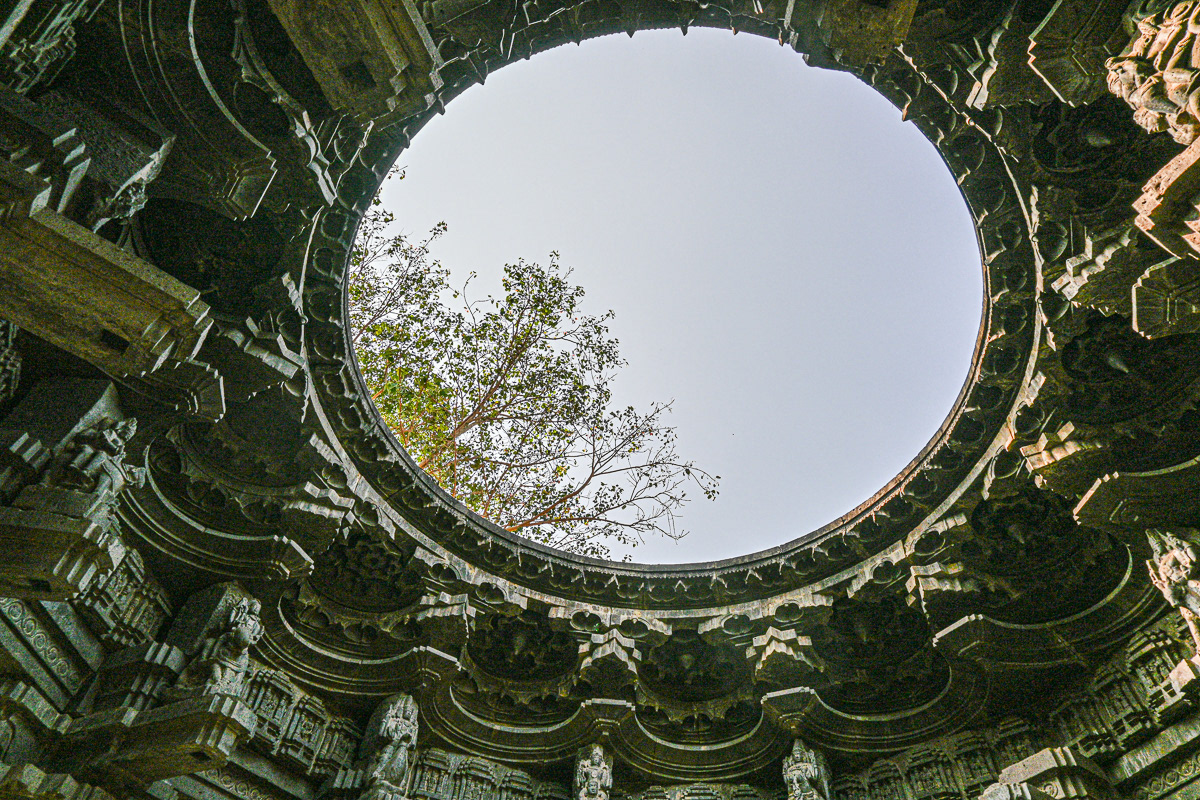




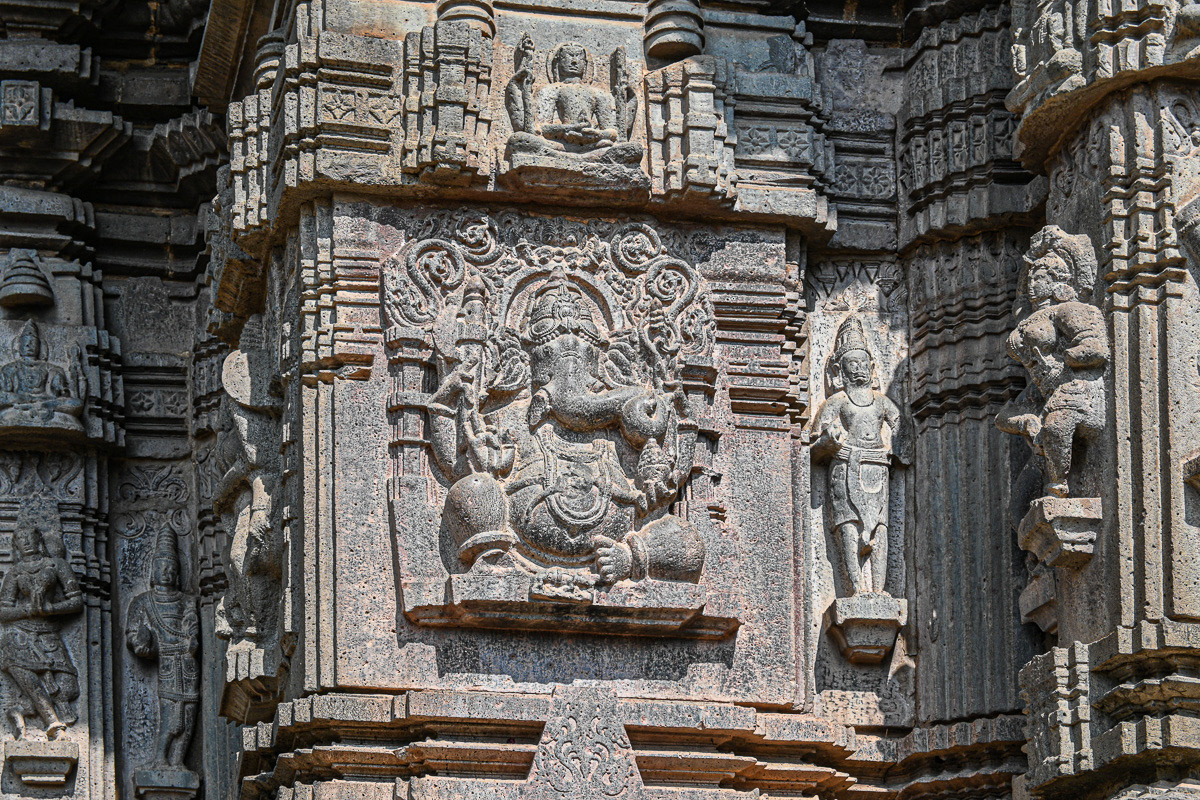
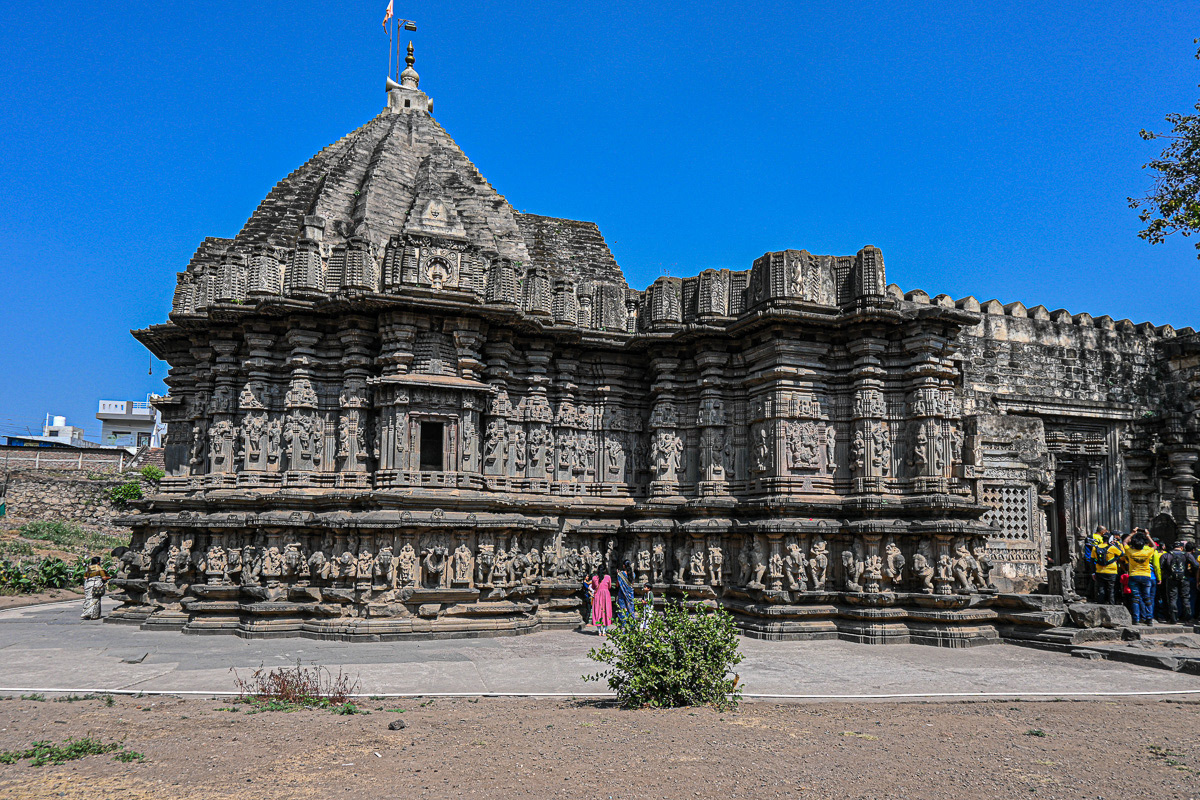
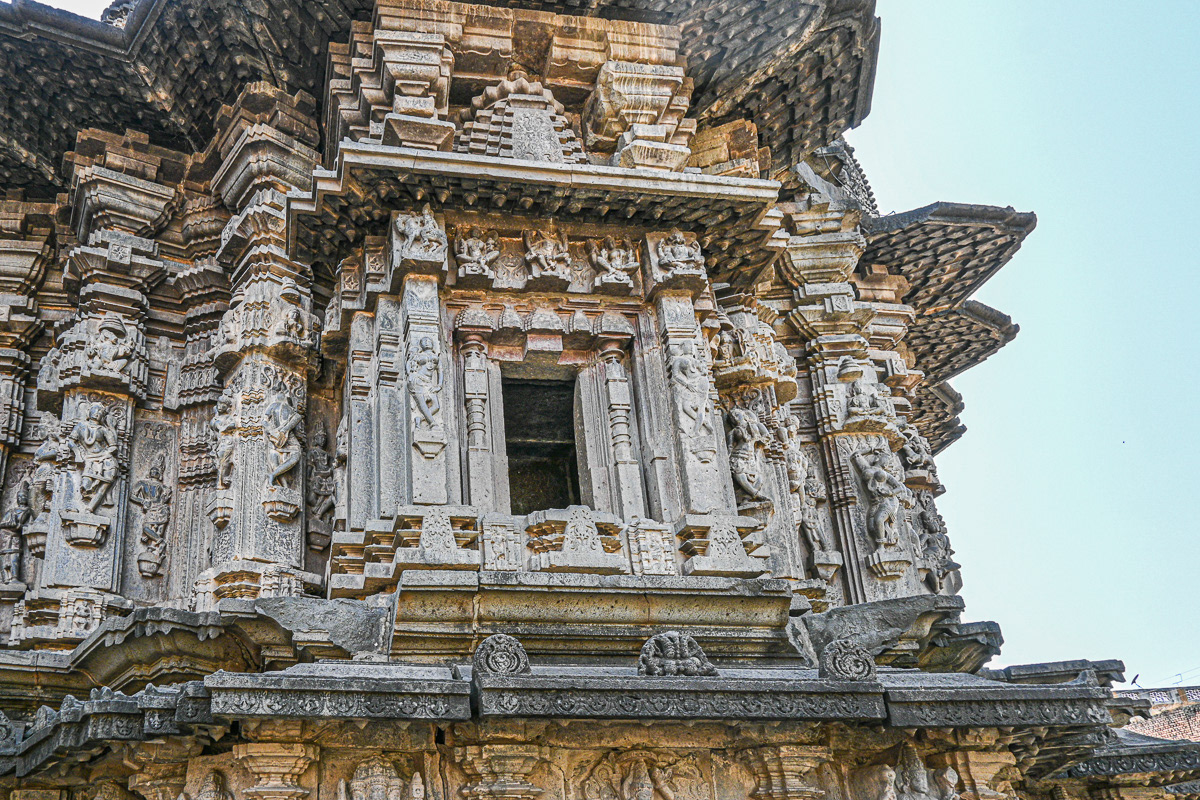
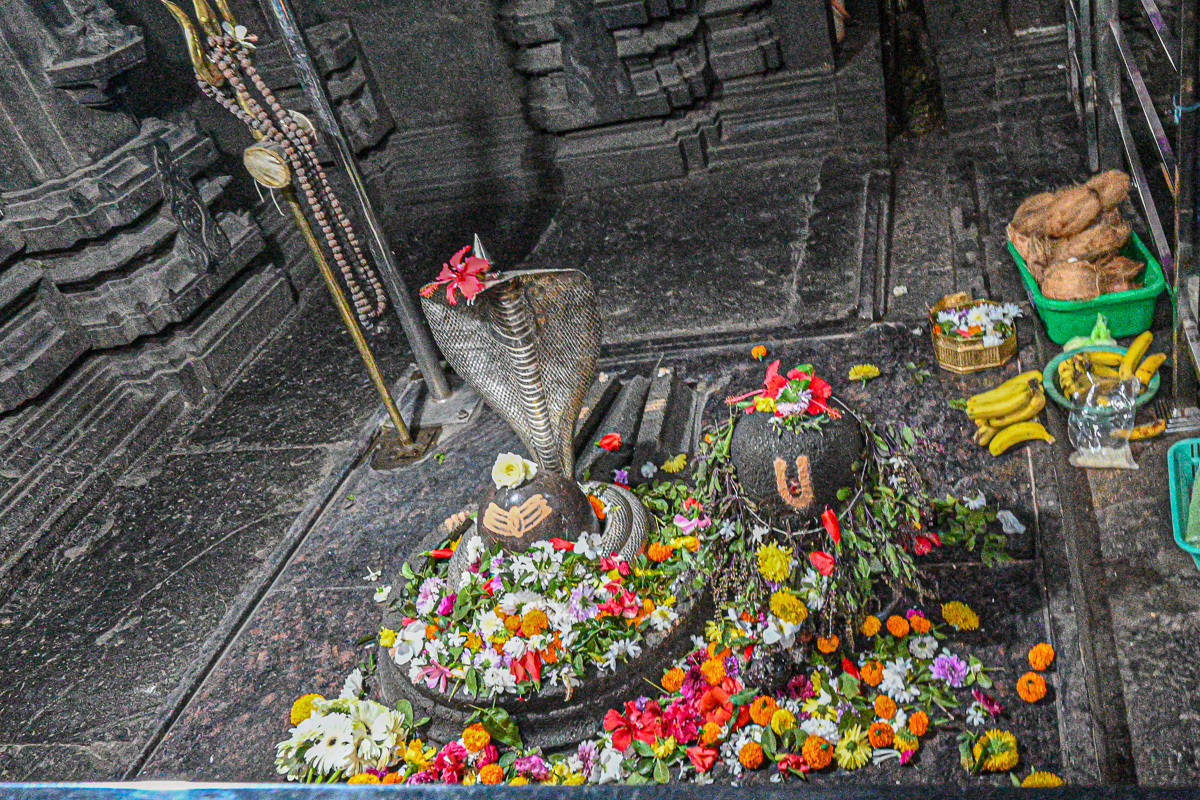
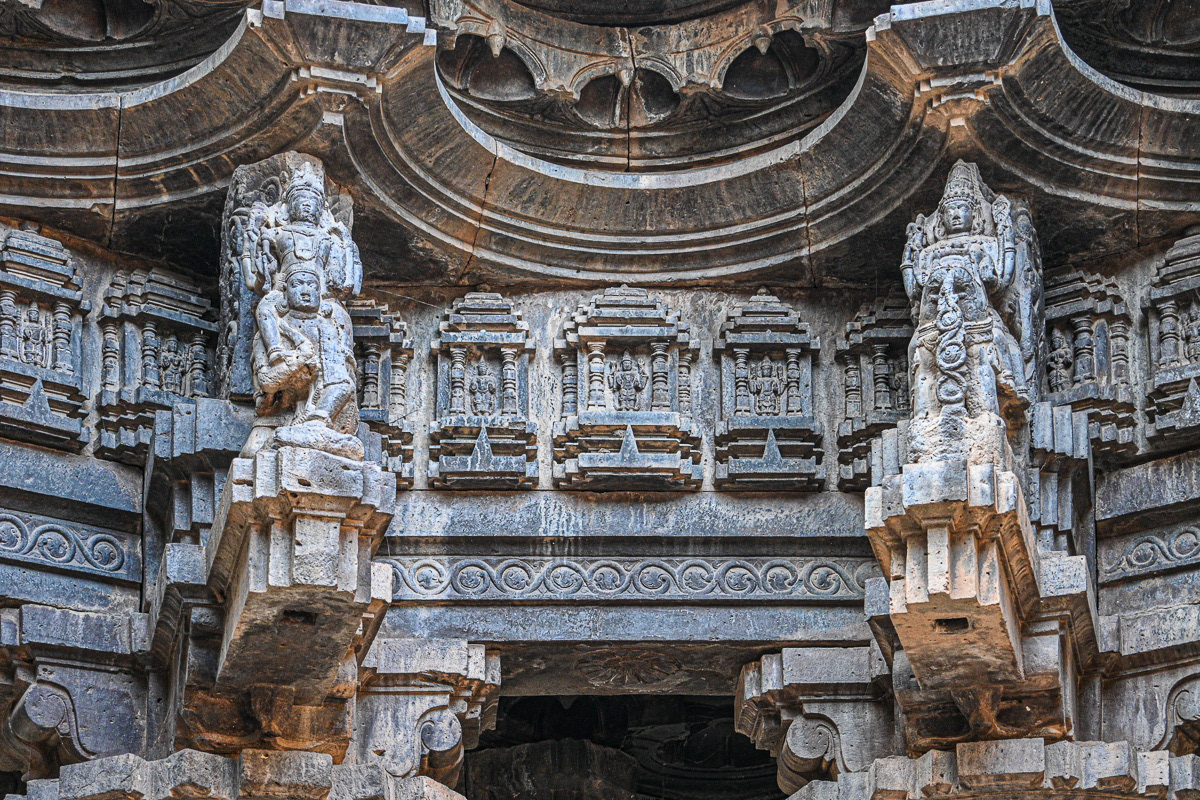
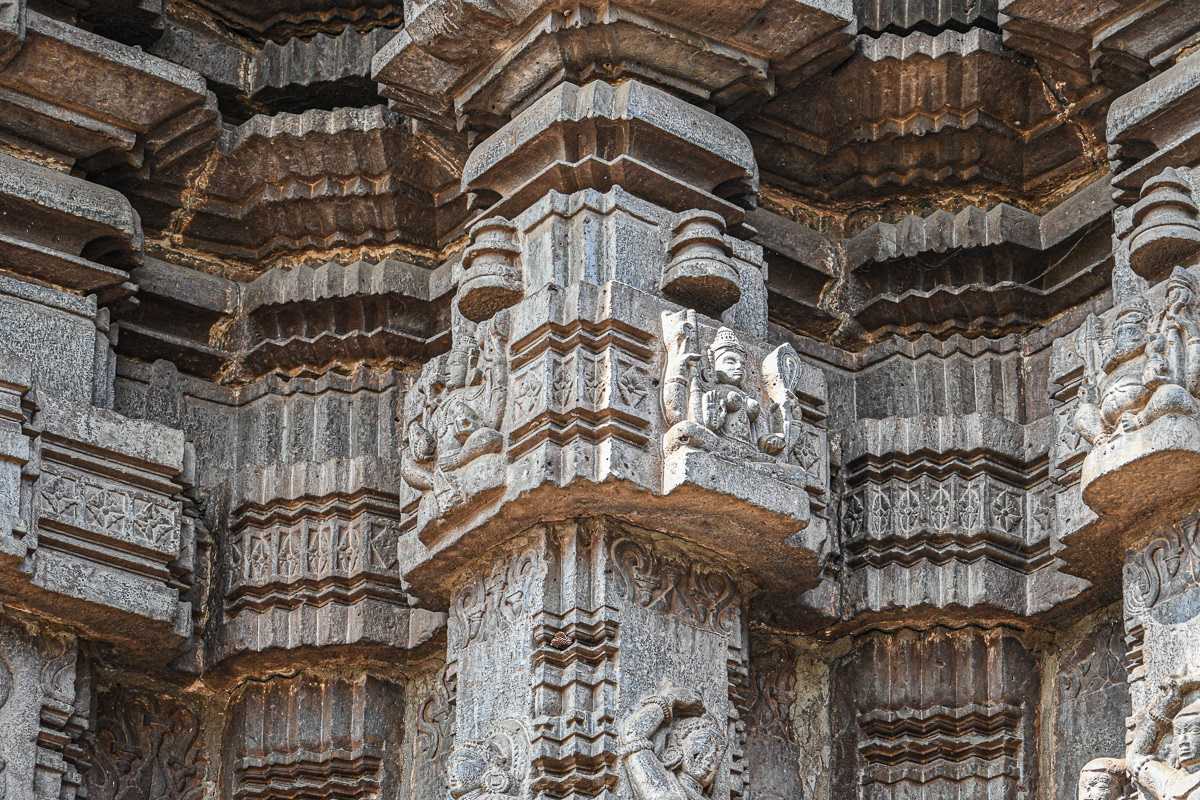

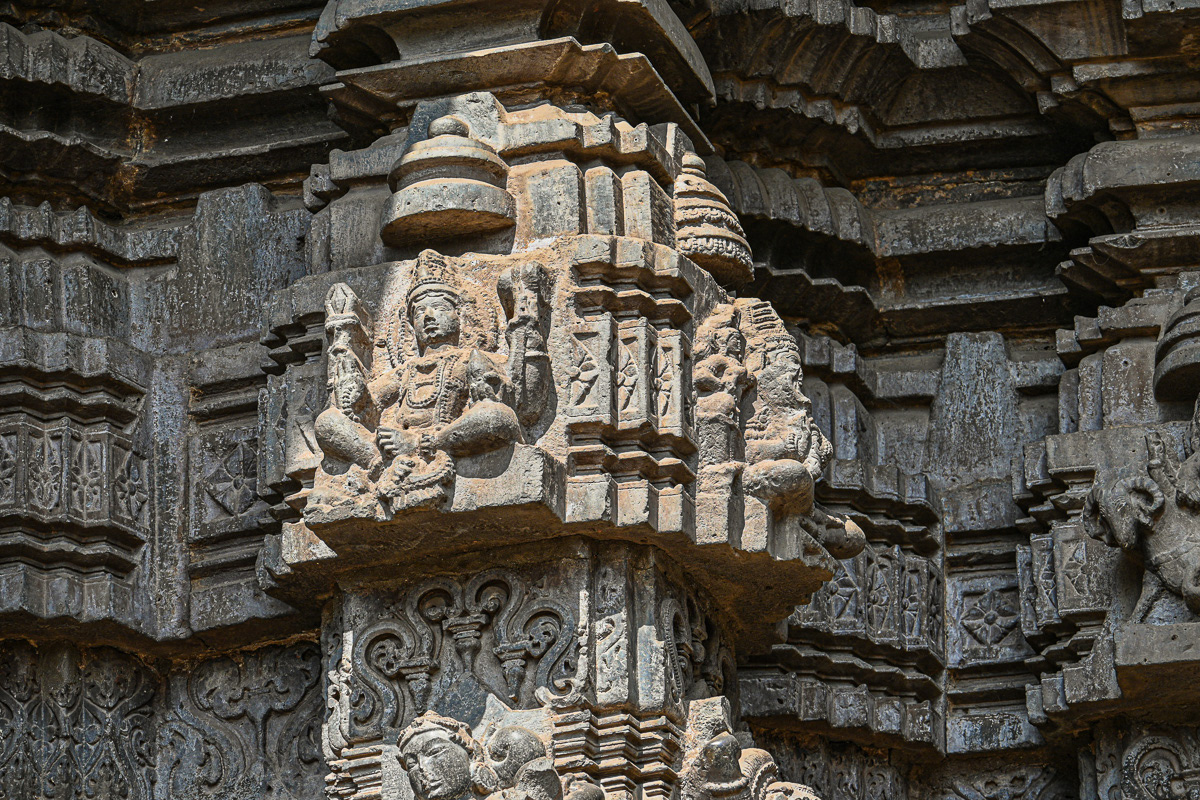
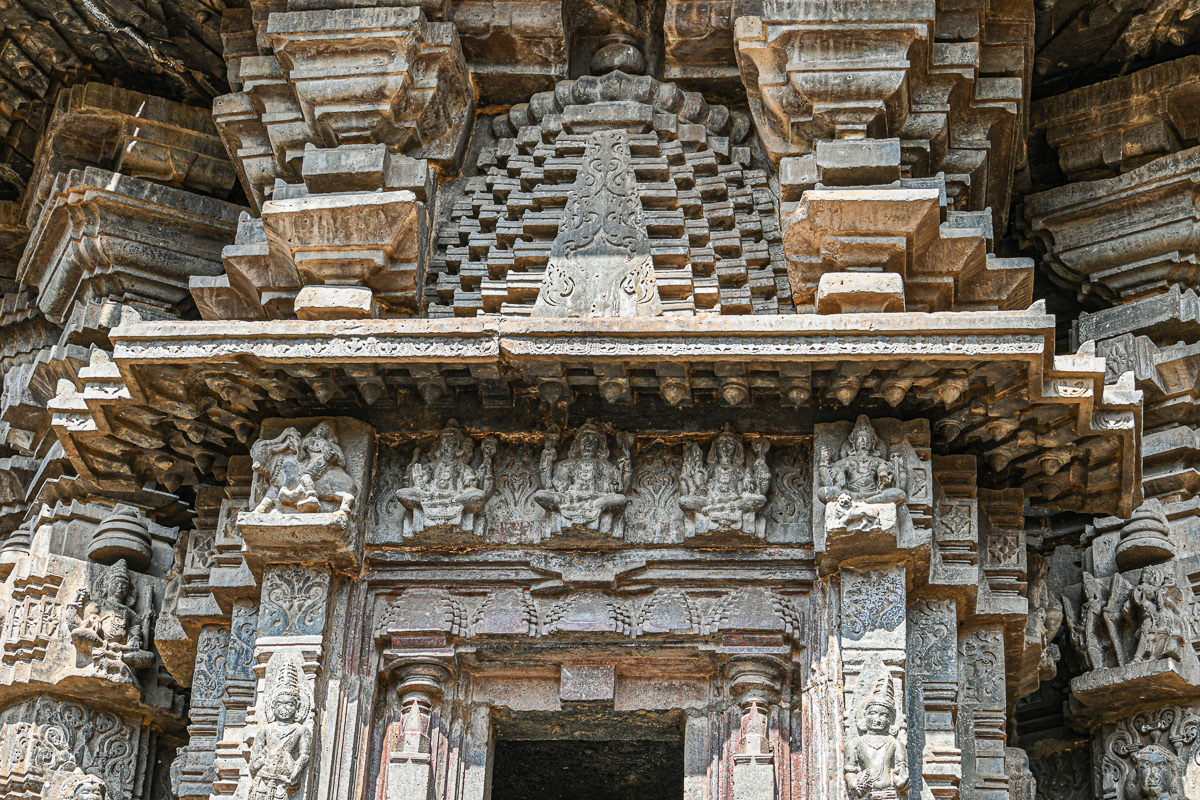
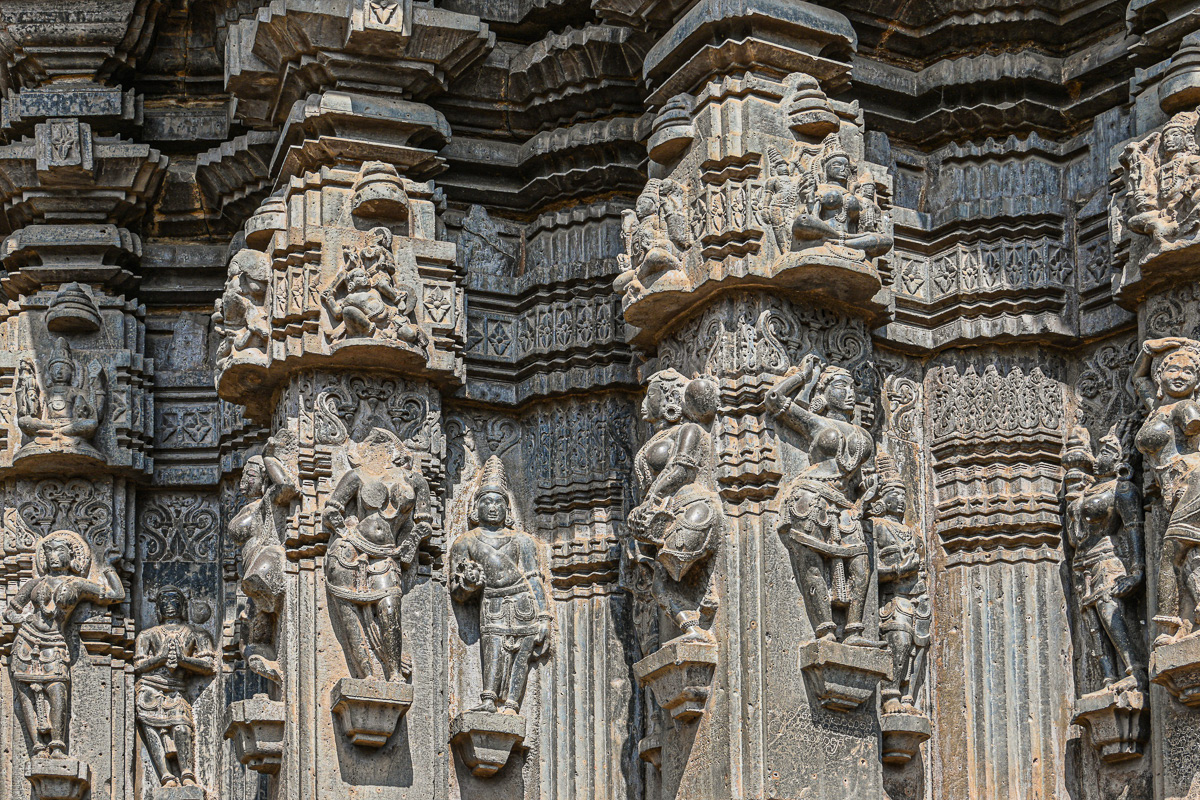
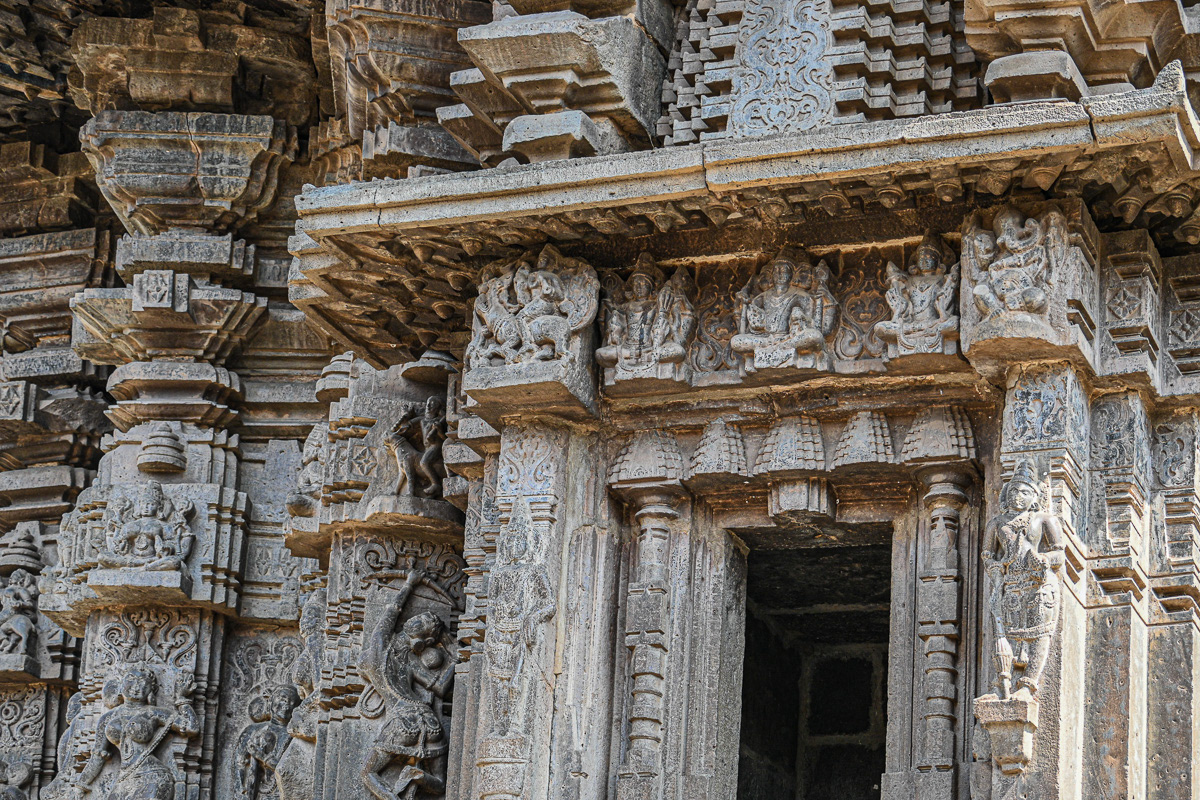

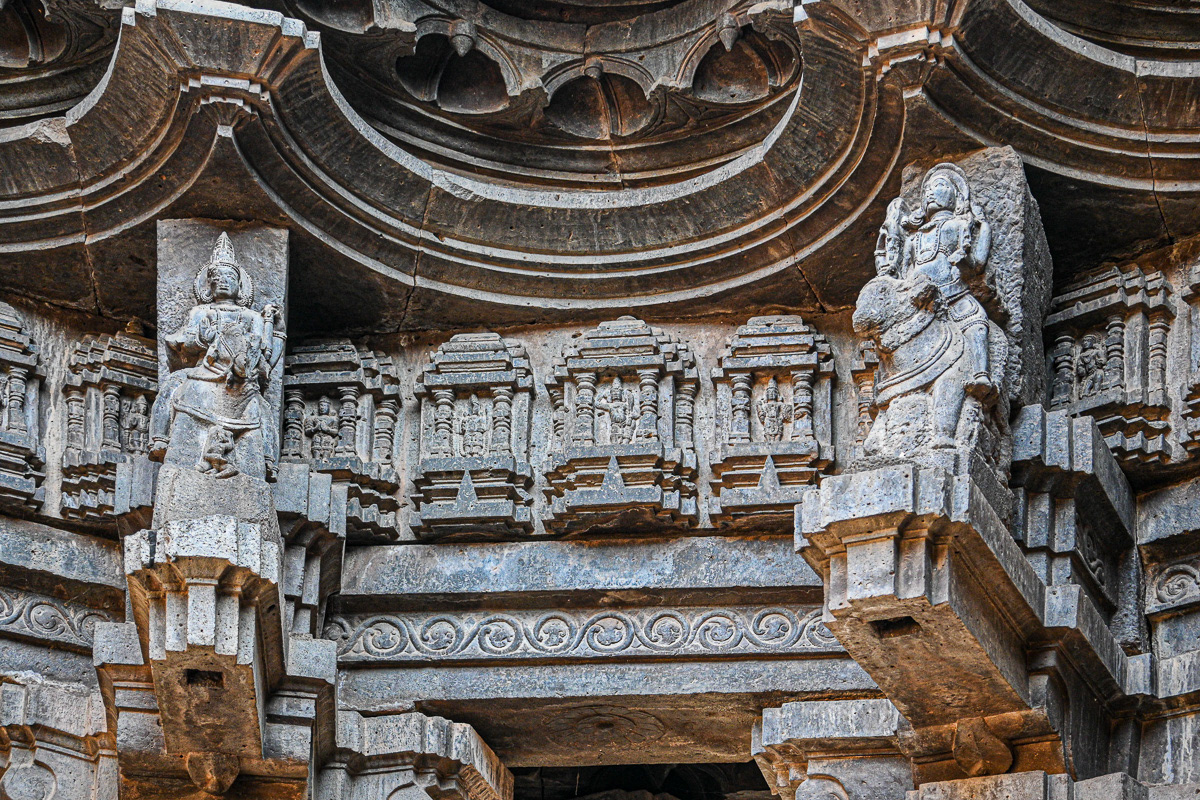
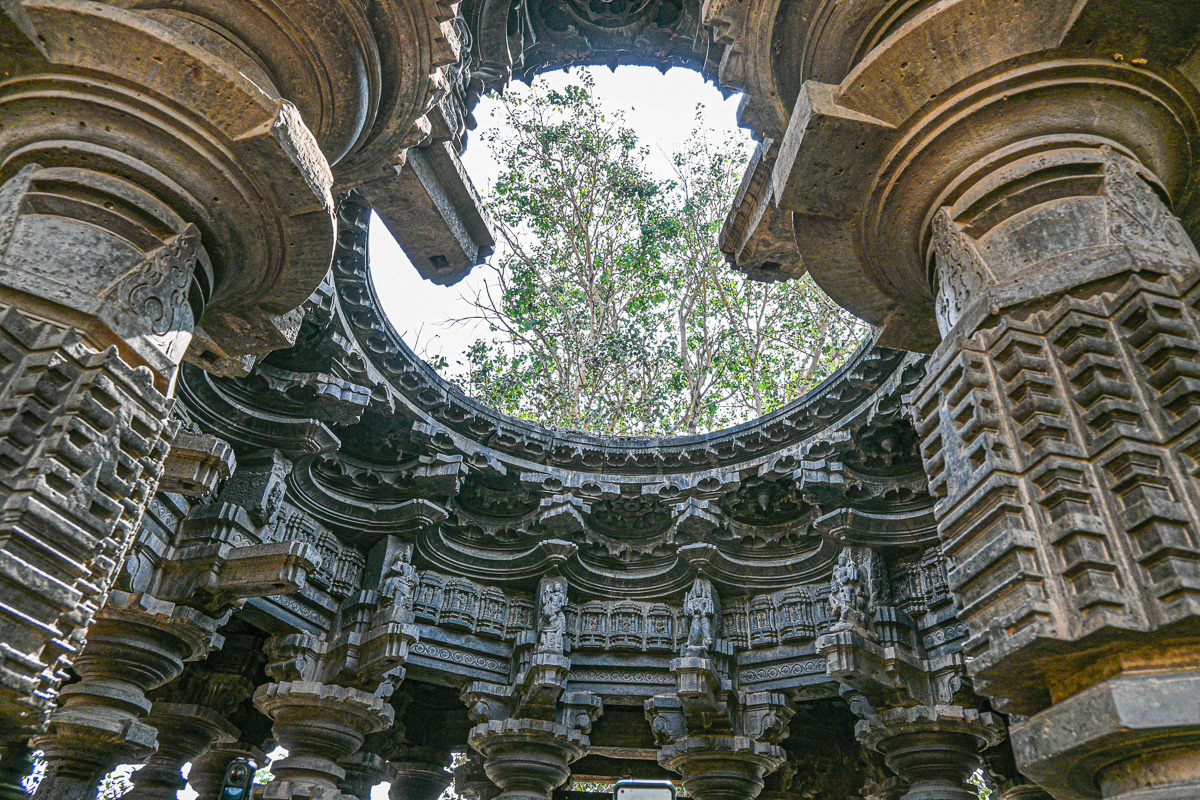
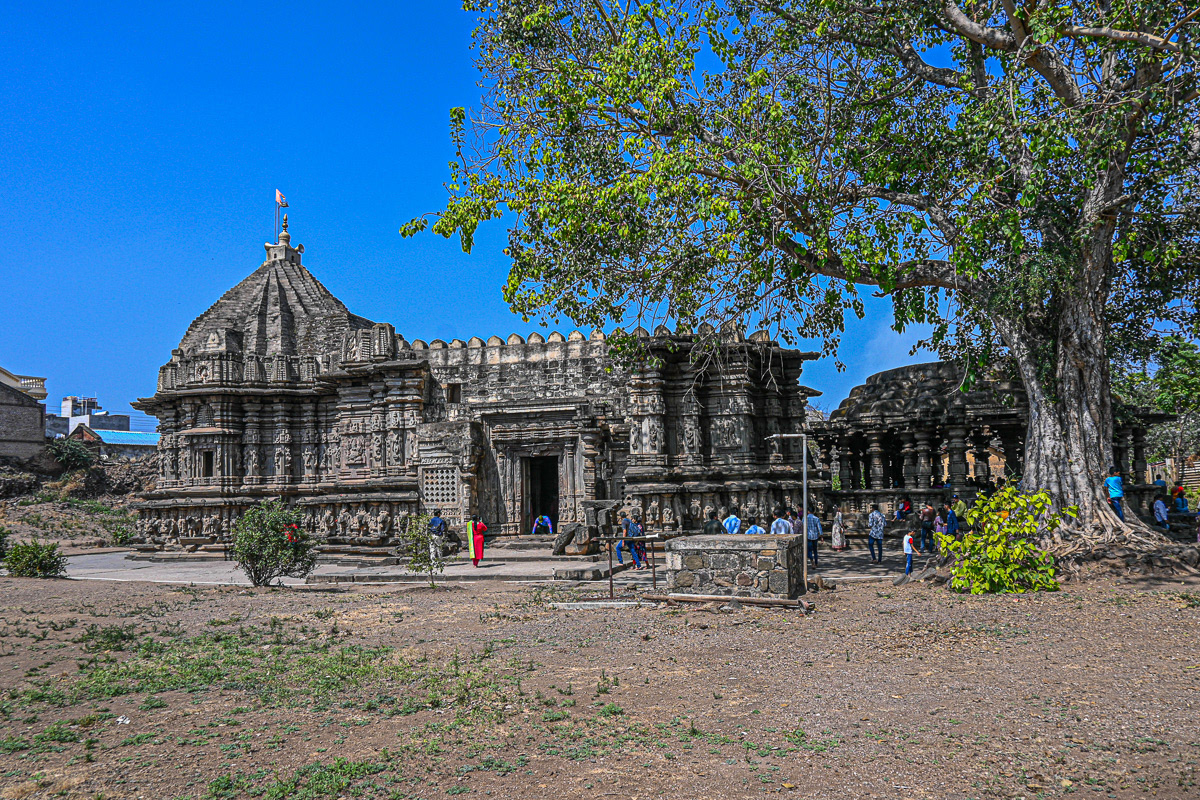



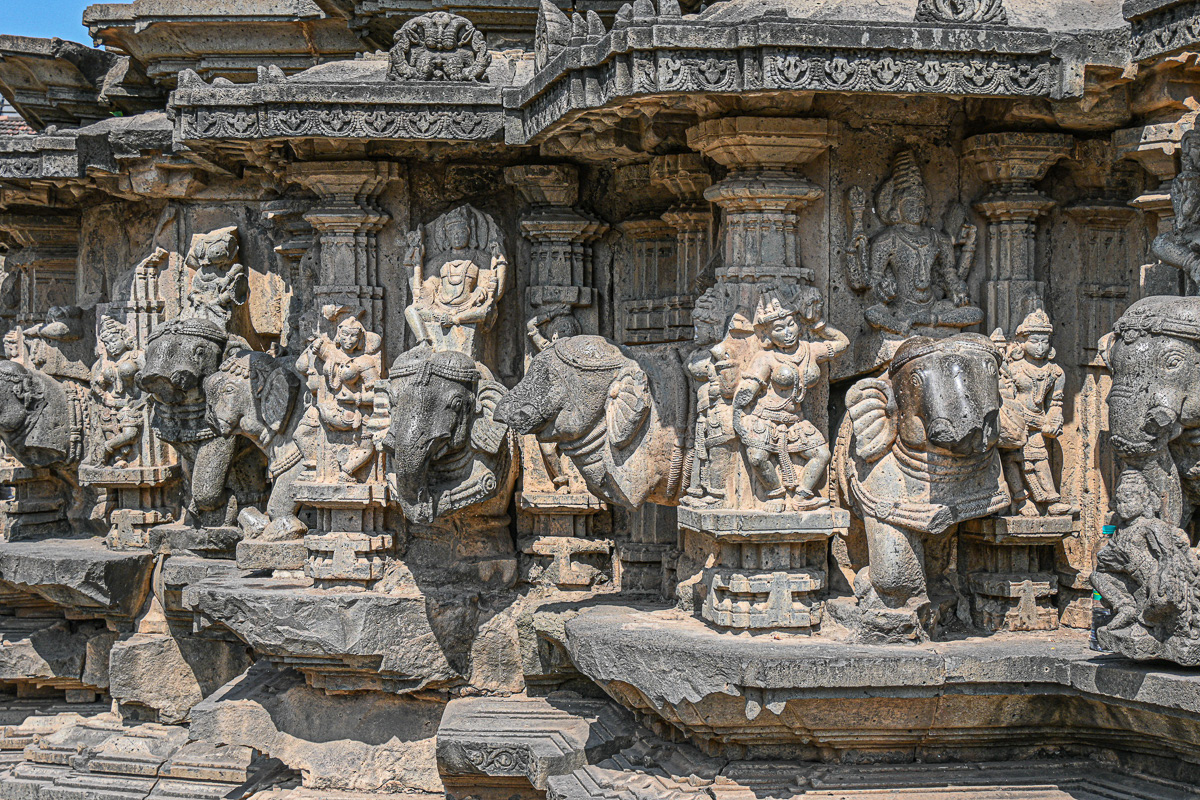
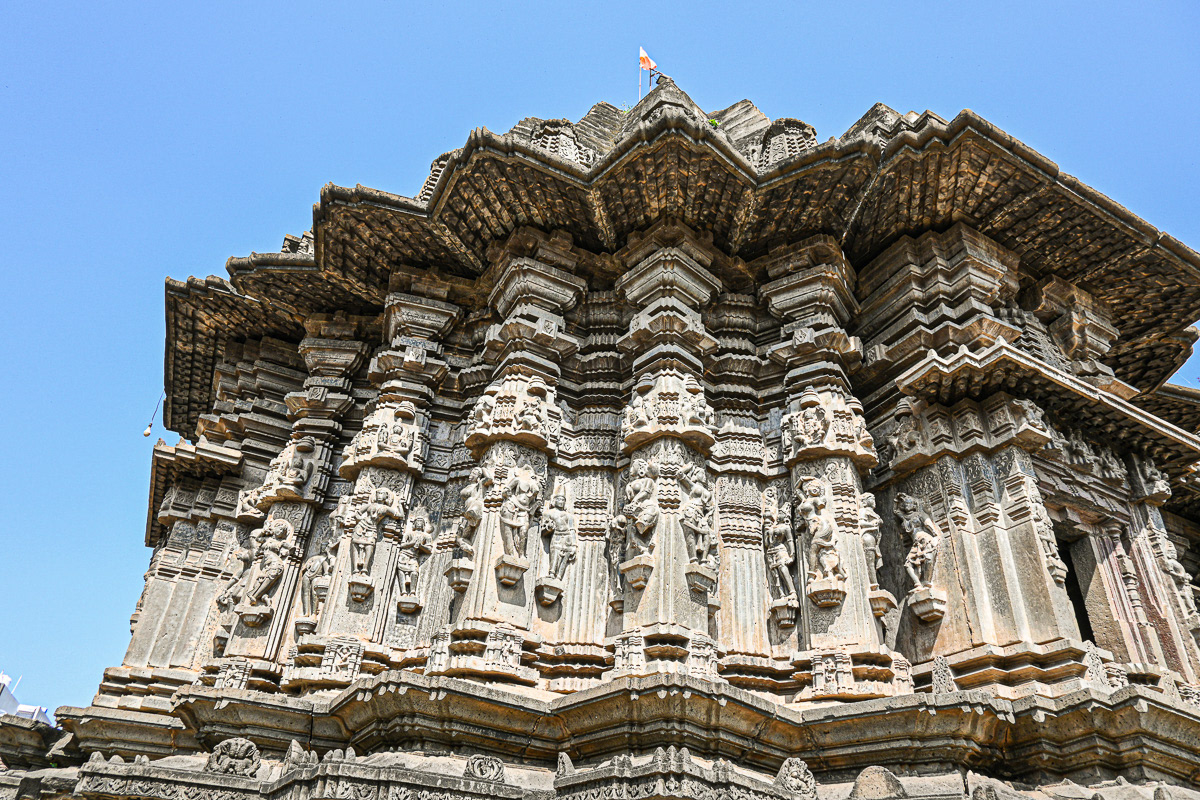

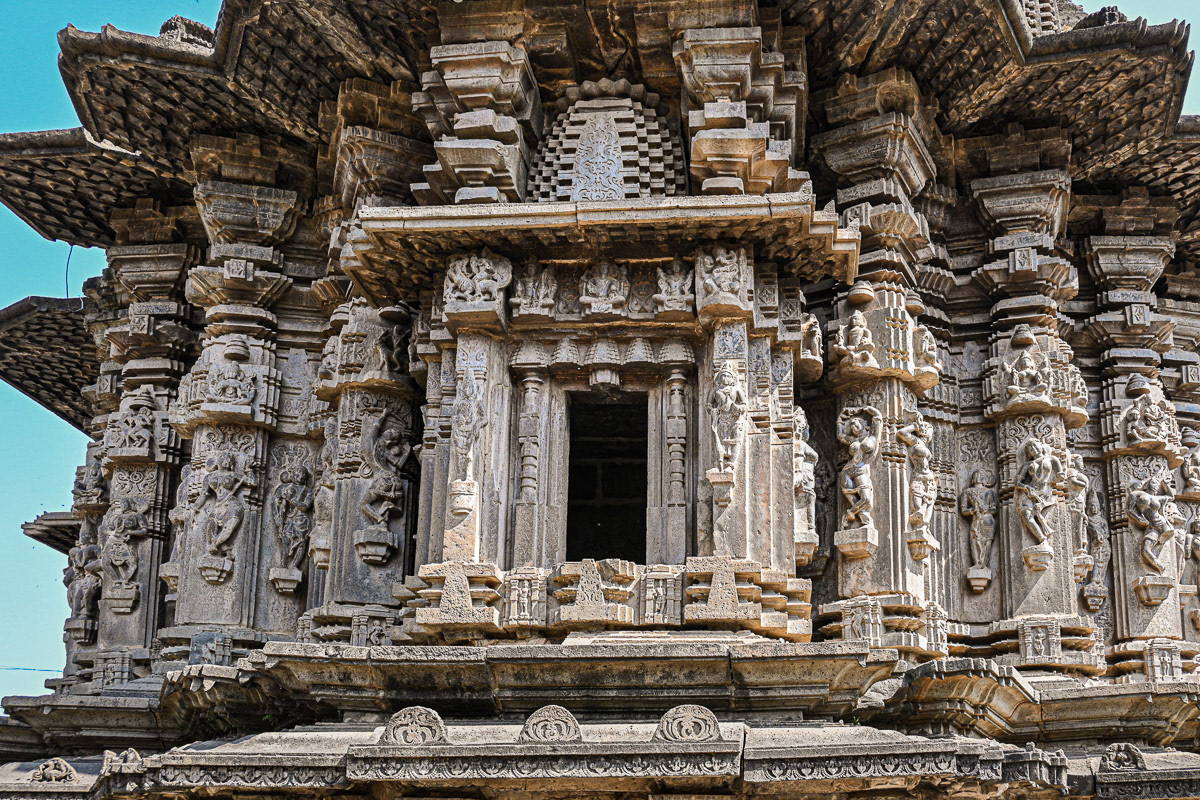
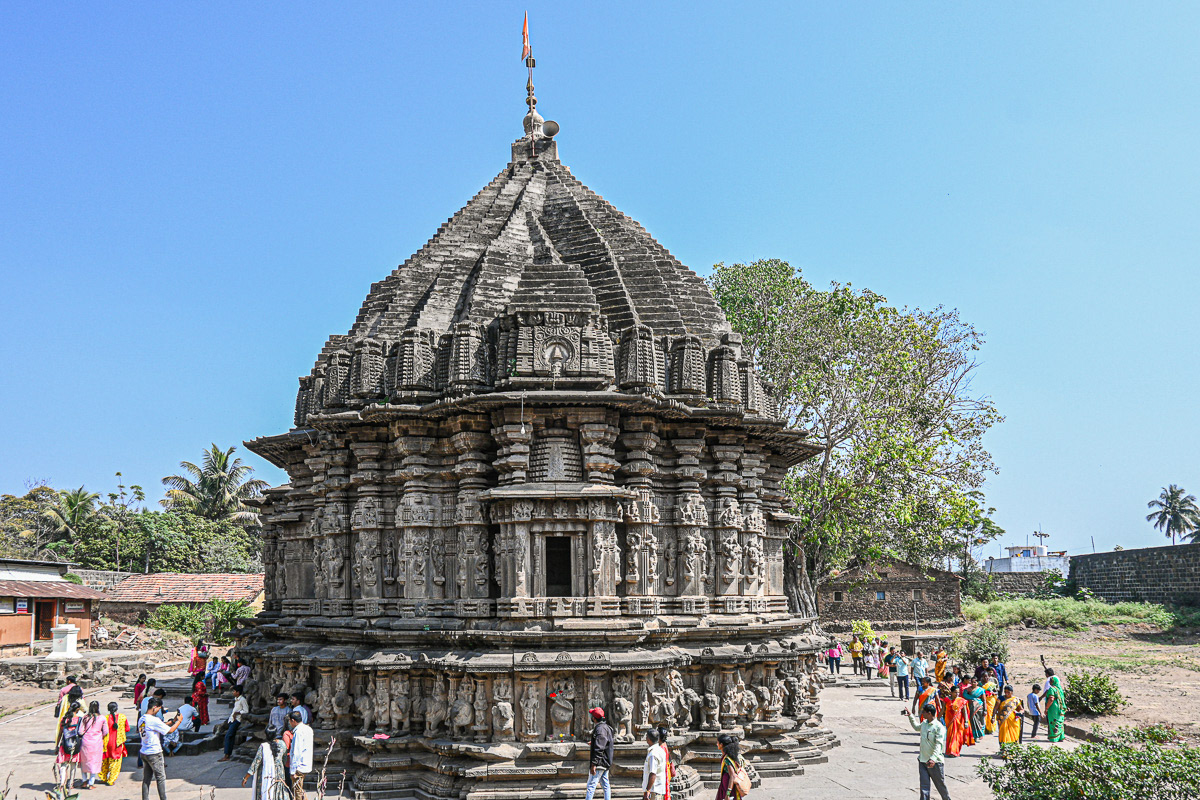
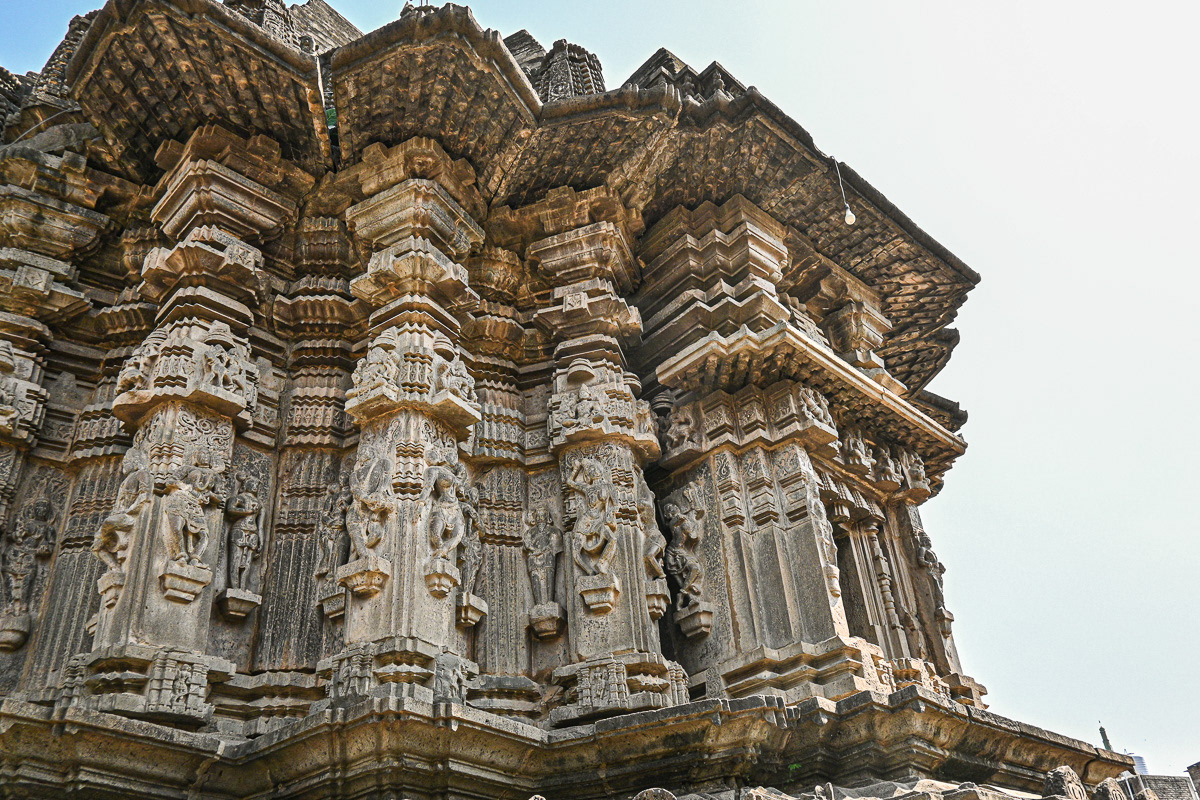
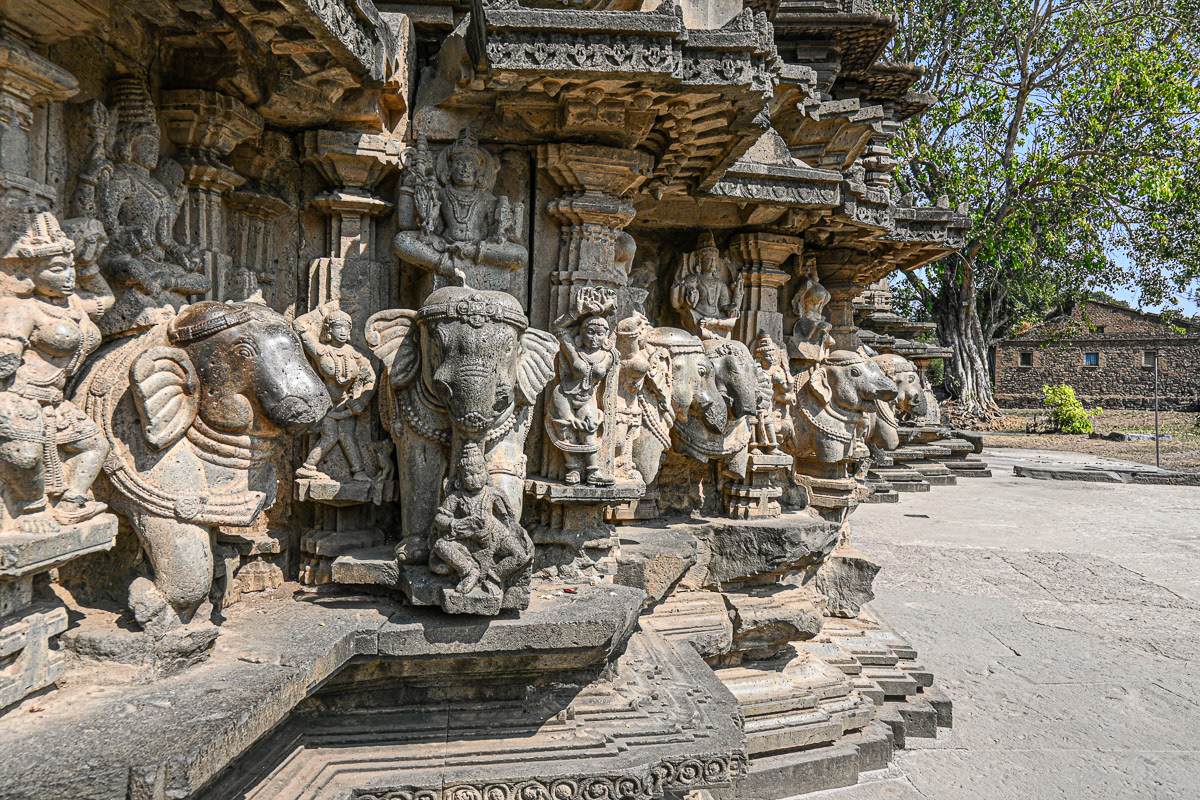
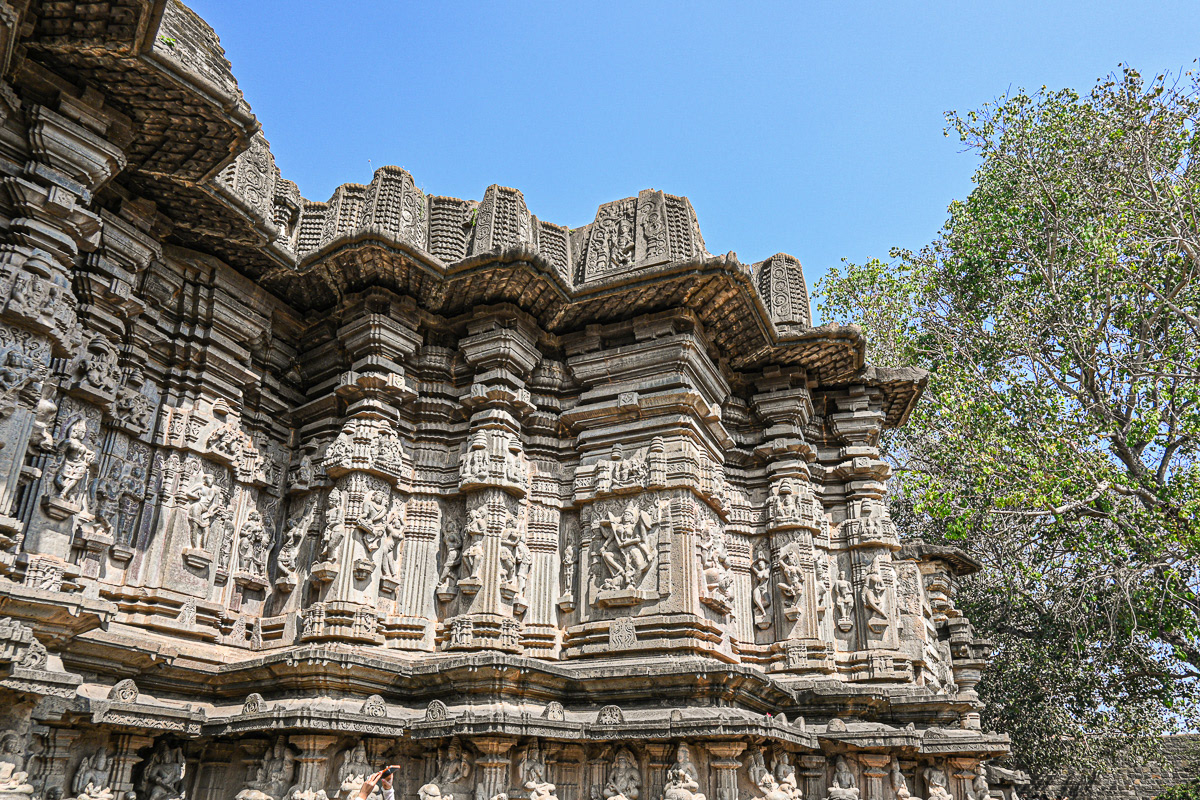

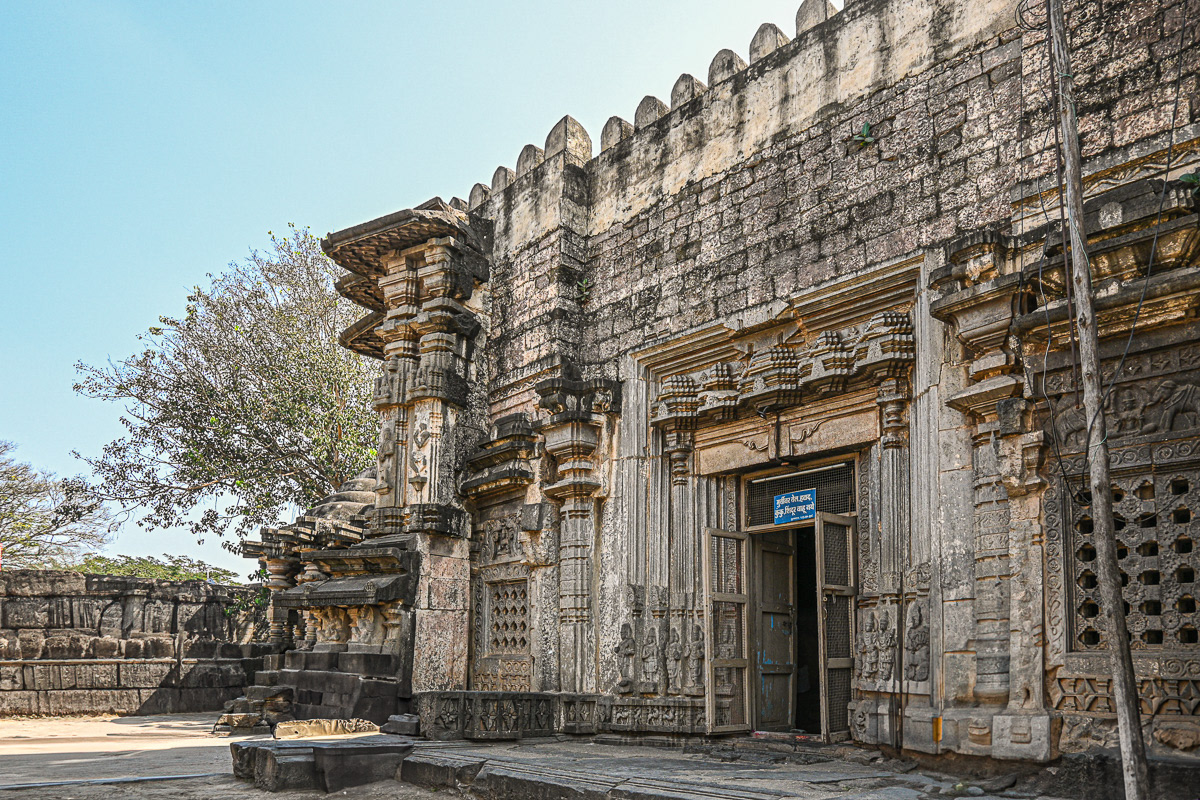

Kopeshwar Temple of Khidrapur is an ancient and historical temple located in Kolhapur district of Maharashtra. This temple is dedicated to Lord Shiva and it was built by western chalukya rulers in 11th or 12th century.The name of the temple "Kopeshwar" is derived from a form of Lord Shiva "Kopeshwar" (Kop + Ishwar), meaning "Angry Shiva". According to mythology, Lord Shiva had become extremely angry when Sati (wife of Lord Shiva) had committed suicide by being humiliated in her father Daksha's yagna. He danced Tandava because of this anger and he is called "Kopeshwar". It is said that this temple was built with the purpose of calming Lord Shiva.. The main feature of the temple is its "Heaven Pavilion", which is round-shaped and is roofless. A beautiful Nandi statue is located in this pavilion. The temple's pillars and walls have been carved out, depicting scenes from various goddesses, animals, and mythology. Ramayana and Mahabharata context are also portrayed on the temple walls. This temple is located on the bank of Krishna river and its environment is very peaceful and sacred. Kopeshwar Temple is not only a religious site, but it is also an important part of Indian architecture and history. An important mythology is attached behind the Kopeshwar temple in Khidrapur, related to Lord Shiva, Sati and Daksh Prajapati. This story is mentioned in Shiva Purana and other Hindu scriptures. According to the story, Daksh Prajapati, who was the father of Sati and son of Lord Brahma, organized a great yagya. He invited all gods in this yagna but did not invite Lord Shiva, because Daksha was dissatisfied with Lord Shiva. When Sati, who was the wife of Lord Shiva, received the information of this yagna, she decided to go to her father's yagna without invitation. When Sati reached her father's yagna, she and Lord Shiva were insulted a lot there. Sati could not tolerate this insult and she committed suicide in the Havan Kund of Yajna. When Lord Shiva received this news, he became extremely angry. His anger created an atmosphere of fear all over the universe. Lord Shiva created Virbhadra due to his anger, who destroyed Daksh's yagna and cut off Daksh's head. Lord Shiva's anger was still not calmed. In this state of anger, they started dancing tandava over Sati's body, which caused the danger of destruction of creation. Looking at this situation, Lord Vishnu divided Sati's body into 51 parts from his Sudarshan Chakra, which prevented Shiva's tandava. Thus the destruction of creation was avoided, but Lord Shiva's wrath was still not calmed. It is said that Lord Vishnu had built Kopeshwar temple at this place to calm the anger of Lord Shiva at this time. Here "Anger" means "Anger" and "God" means "God". Thus, "Kopeshwar" is the form of Lord Shiva which was highly angry. Lord Shiva is worshipped in this temple, and the purpose of construction of this temple was to calm the anger of Shiva. This is why Lord Vishnu's statue is also established here, considered helpful in calming the anger of Shiva. Khidrapur's Kopeshwar Temple is an excellent example of architecture, primarily depicting the coordination of intricate and hemadpanthi style. This temple is famous for its unique structure and fine carving. Let's explain its various architectural elements in detail: 1. Paradise Pavilion: The most important and unique part of Kopeshwar temple is its "Heaven Pavilion". This pavilion is a circular hall, built without a roof. It is named "Heaven Pavilion" because there is a direct view of the sky, which makes it different from other temples. A beautiful Nandi statue is located in the middle of this pavilion, worshipped as Shiva's vehicle. 2. The House of the House: Paradise is a huge congregation based on pillars. This pavilion is used for the gathering of devotees and worship. There are more than 60 pillars in the assembly, which have been fine carved. Scenes of goddesses, animals-birds and mythology are carved on these pillars. 3. The womb: After the assembly comes the main womb, where the statue of Lord Shiva (Kopeshwar) is established. The womb is small and intense, creating an intense and spiritual environment. There is also a sight path for walking around the womb, where devotees can sight while worshiping. 4. Carving of walls and pillars: Kopeshwar temple walls and pillars are decorated with fine carving. Scenes of epic poems like Ramayana and Mahabharata have been engraved on these. Also, paintings of various goddesses and mythological characters are also included in the carving. Carving brings depth and expansion, as well as artistry, a symbol of art and culture then. 5. Hemadpanti style: The architectural style of the temple gets a glimpse of the Hemadpanthi architecture, which was developed during the Chalukya and Yadav period. It has used the technology to connect stones to each other without lime or using spices. This style is known for its strong and durable construction. 6. The summit of the temple: The peak of Kopeshwar temple (top of the womb) is quite high and decorated. This summit has also been finely carved, featuring mythology, as well as various geometric and floral designs. 7. Sculpture art: Apart from Lord Shiva, there are idols of Lord Vishnu and other goddesses also established in the temple. These sculptures also represent excellent carving and sculpture art. The architecture of the Kopeshwar temple is not only important in religious and spiritually, but it also symbolizes the excellence of ancient Indian architecture and culture. This temple lively presents the unique heritage of Indian craftsmanship and architecture.

































